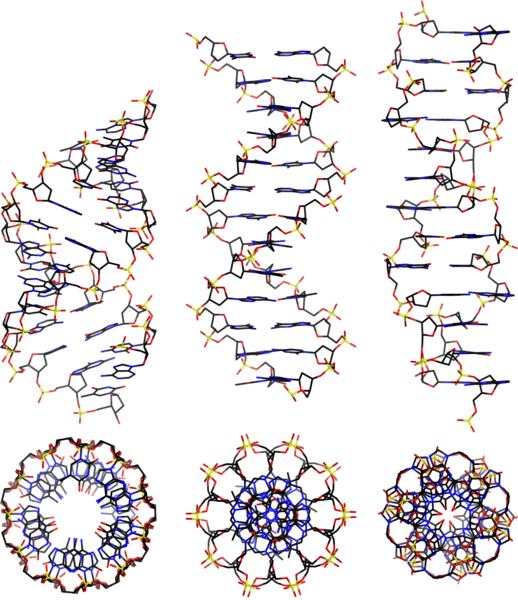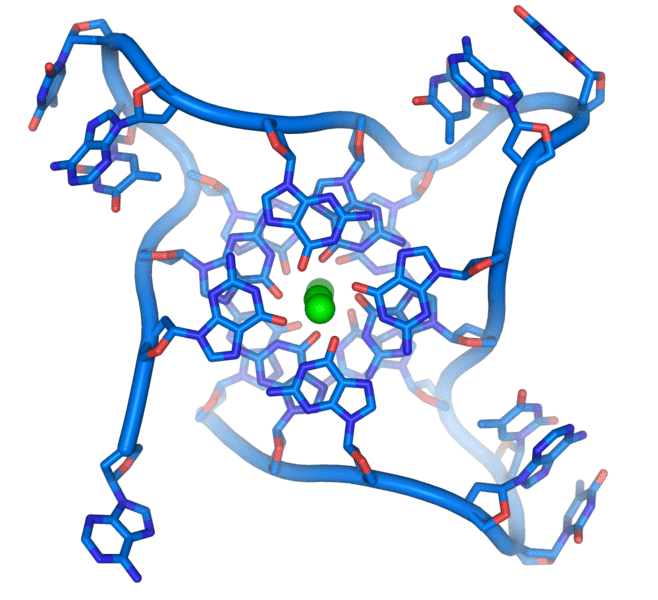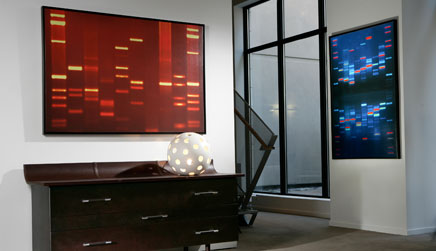Sounds straight out of a science fiction novel? But this is very much REAL. People across the globe are refurbishing their homes with these extraordinary objects of awe.
Heather Dewey-Hagborg, is known to have created DNA portraits/art from discarded used human items, for her project Stranger Visions.
Salvador Dali, from the 20th century, is very closely associated with this form of art. He was very much ahead of his time. He was a Catalonian artist with a deep fascination for genetic mysticism. One of his works – Galacidalacidesoxyribonucleicacid is composed of his wife and his DNA.
Officials of DNA Art UK Limited shared the relevance of such artwork today.
‘It’s a unique self-portrait, a portrait of you, by you,’ remarks Dutch molecular geneticist Rudolf Wessels.
“DNA Art is at the cutting edge of art and science,” states Frank Scolaro, Director of DNA Art UK.
Some of the biggies making their mark in this industry have been mentioned below.
1. DNA11
A major company that has been working immensely on DNA art portraits worldwide is DNA11. They are highly committed to rendering a hassle-free procedure to get your personal DNA portraits. They beautifully manifest the amalgamation of science and design.
The interested customers get a DNA collection kit delivered to their doorstep. The components are packed in a metal box. There is a well-drafted manual inside the box to guide you through the DNA collection process. A swab kit is present for you to collect and enclose your cheek swab on the FTA card to extract DNA. You can choose a color for your DNA artwork. Or can suggest what’s on your mind for the color scheme of your portrait. Then, you can enclose the collected sample in an envelope and send it back for further fabrication.
The sample is sent to the laboratory with a barcode to ensure distinction. The technicians work on unusual genomes to get you that personal biological artwork. In the making process, the DNA is filled with gel, and gel electrophoresis is carried out which separates the larger and smaller DNA strands.
Thereafter, the DNA is stained, put on an ultraviolet box because of which gets illuminated and an image is captured. The team of designers then works on the picture to get your specified customizations. Buyers also get a digital version of their product to save on their devices if they wish to. Further additions like frame size, quality, personal signature are incorporated and the final piece is delivered. DNA11 has successfully served more than 10K customers in 29 different countries.
2. GeneticPhotos
This company takes extreme pride in combining contemporary art and genes. Pioneering DNA artistic profiles in Spain by means of G-Portraits or G-Chromas. Their product categories are diverse enough to include G-Crystal, G-T-Shirt, and G-Portrait Baby.
As with the previous brand, the potential buyers are first sent a collection kit which includes, ID code card for G-Portraits or G-Chromas (as per the selection) and 2 cotton swabs. It is suggested not to consume any food 30 minutes before the sample collection. Make sure to fill in the Identification Codes on the code cards and collect a DNA sample from the side of your cheek. After letting the swabs dry for 20 minutes, put them in the sterile tubes. In the case of 2 DNA collection samples at the same residence, separate kits are sent. The fingerprint collection goes around pretty much the same. Just the difference is that it will have fingerprint cards instead of swabs.
G-Portraits are made in a very similar fashion to DNA11 artwork. Here, G-Chromas are interesting to explore. They are color code representations of your DNA sequence which is acquired via fingerprints. Using Polymerase Chain Reaction, differential characteristics of the genome are amplified. Electrophoresis is conducted and the sequence of nucleotides is obtained. This is transcribed to visual forms following your specifications. For a more personalized appeal, you can request icons, higher resolution, and any discretionary addition. GeneticPhotos with its heterogeneous collection serves as a large pool of customized gifts.
Why has it gained popularity?
We are constantly on the verge of rejuvenating things for a more creative and innovative outlook. We are also looking for avenues to associate sentimentally, whenever we can. In such standard criterion, we are weaving up Science and Art, and the fusion is doing wonders. DNA or Genetic art has become so popular because of its endless scope of optimization and personalization. It can truly reflect you. More so ever, it is a part of you (in a beautiful imagery form).
DNA portraits are great symbolic pieces. Gift these to your loved ones, or decorate your walls with these magnificent décor pieces. These can add so much life to any morbid wall or corner of your house. Genetic art is so unconventional. It is the most unique item in your photo gallery. It is you, but not exactly you. It can be stated as a whimsical way to commemorate yourself or your loved ones.
DNA Art portraits might also be available for your pets very soon. Some brands are still working on this aspect and preparing to launch it in the market.
How are my genes transformed into pictures?
The business uses a chemical procedure known as DNA isolation to separate your DNA from your sample. Utilizing molecular and biological methods, the business can separate the DNA from your sample utilizing this approach. Your DNA is amplified, causing thousands of exact duplicates to be created from your purified sample. These duplicates are run through a gel grid, and each of your DNA strands passes through the gel by its size. To aid the DNA fragments in moving to their ultimate location, an electrical current is sent through the gel. Your DNA art’s distinctive pattern is created by how quickly the smaller fragments pass through the gel compared to the bigger ones. They are fixed in place once they have finished traveling around the grid. Thus, your DNA pattern and DNA artwork are created. The finished work of art is stunning and serves as a visual depiction of you and the genetic material that formed you.
An incredible form of artistic expression is DNA art. One of these genetic pictures may be created for everyone. Once you discover a reliable business to help you, the procedure is straightforward. The cost of having your portrait made can range from $200 to $2,000 depending on the business you select and the style of image you would like to have. The technical term for this is DNA gel imaging. Mini photographs are offered by several businesses, along with professionally framed portraits and accessories that may be added for an additional fee.
A wonderful technological and creative method is DNA art. Your genetic map can now be in your hands and framed for display on your wall. Undoubtedly a one-of-a-kind work of art that nobody else could ever possess or make.
How can one’s DNA become an artistic creation?
This has been done by many scientists, and the outcomes are very astounding.
Using genetic data, it is collected from the streets, artist Heather Dewey-Hagborg reconstructs the faces of strangers. She gathers the fingernails, cigarette butts, and wads of abandoned chewing gum as she makes her way back to her Brooklyn home via the sidewalks, streets, and bus stations. After processing these samples and extracting the DNA, she is left with a few face models after additional processing. To create the sculptures, a 3D printer is helpful.

https://commons.wikimedia.org/wiki/User:Mauroesguerroto
But how did all of this begin?
Adrian Salamunovic, a co-founder of DNA 11, said in a piece for The New York Times magazine that the inspiration for the project arose from his interest in some of the photographs in a company brochure for which his buddy Nazim Ahmed was working.
Ahmed, who also held a genetics degree, was marketing some tools that created pictures of DNA samples for use in labs. Salamunovic said several of the gray and black block patterns resembled Rothkos.
He wondered if everyone’s DNA could produce the same visuals. He had a lot of thoughts racing through his head, including what would happen if colors were added to this. What would happen in the end?
He convinced Ahmed to test the method out by giving him a sample of his DNA.
He admired the outcome. He displayed the portrait’s enlarged replica in his house, which quickly gained notoriety as a significant tourist destination.
Within a few months, Salamunovic and Ahmed both launched straightforward websites selling various DNA portraits and left their day jobs. Their efforts were recognized by publications like Wired and MoCo Loco, which helped them sell thousands of DNA pictures. The business signs up retail partners and expands its product lineup, which currently includes fingerprint-based art.

https://commons.wikimedia.org/wiki/User:Splette
What occurs in the background to transform a single piece of DNA into lovely and original wall-hanging portraits?
In high-tech labs, DNA portraits are created through several processing stages to produce the final product. The business uses the technique known as DNA isolation to separate the DNA from the provided sample.
During this procedure, the business harvests the DNA from your model and uses several biological methods to purify it. Thousands of identical copies of the DNA are produced as a result of the amplification process. These copies are run through a gel, where the DNA strands are divided and moved around according to size.
The DNA fragments are assisted in moving to their final location by the current flowing through the gel. The distinctive pattern on the DNA artwork was produced because smaller particles moved through the gel more quickly than bigger ones. Your DNA pattern and DNA art are created after they have finished traveling around the grid. The finished artwork is stunning and serves as a visual depiction of you and the genetic material from which you were created.

